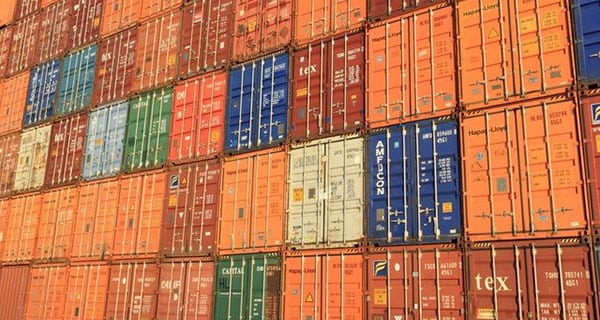 Canada’s merchandise trade balance with the world in August was in a surplus position for the first time since December 2016, according to Statistics Canada.
Canada’s merchandise trade balance with the world in August was in a surplus position for the first time since December 2016, according to Statistics Canada.
The federal agency reported on Friday that the $526 million surplus followed a $189 million deficit in July. Both imports and exports declined in August. Imports fell 2.5 per cent, mainly on lower imports from non-U.S. countries, while exports were down 1.1 per cent, mostly on decreased exports of passenger cars and light trucks.
“Total imports declined 2.5 per cent to $50 billion in August, with decreases in seven of 11 product sections. Aircraft and other transportation equipment and parts, consumer goods, and motor vehicles and parts were mostly responsible for the decrease. Year over year, total imports were up 7.3 per cent,” said StatsCan.
“Exports decreased 1.1 per cent to $50.5 billion in August, despite gains in six of 11 product sections. Lower exports of motor vehicles and parts and of metal and non-metallic mineral products were partially offset by higher exports of metal ores and non-metallic minerals. Exports excluding energy products decreased 1.5 per cent. Year over year, total exports were up 15.5 per cent.”
The federal agency said imports from countries other than the United States fell 4.5 per cent to $17.6 billion in August, the third consecutive monthly decline.
“Many countries contributed to the decrease, including China (various products), Brazil (bauxite), Belgium (pharmaceutical and medicinal products), Algeria (crude oil) and the Netherlands (motor gasoline). These declines were partially offset by higher imports from Switzerland (copper),” it said.
“Exports to countries other than the United States were down 0.9 per cent to $12.8 billion. Lower exports to the United Kingdom were behind the decline, principally on decreased exports of unwrought gold and crude oil. Gains in exports to India (copper ores and potash) and South Korea (copper ores) partially offset the decline.”
Statistics Canada said the country’s trade deficit with countries other than the United States narrowed from $5.5 billion in July to $4.8 billion, contributing to the movement of the overall trade balance from a deficit to a surplus in August.
It said imports from the United States decreased 1.3 per cent to $32.4 billion, mostly on lower imports of aircraft. Exports to the United States declined 1.2 per cent to $37.7 billion, mainly on lower exports of passenger cars and light trucks.
“Consequently, Canada’s trade surplus with the United States in August was essentially unchanged at $5.3 billion. The trade surpluses in July and August were the largest since October 2008,” it said.
Mario Toneguzzi is a veteran Calgary-based journalist who worked for 35 years for the Calgary Herald, including 12 years as a senior business writer.
The views, opinions and positions expressed by columnists and contributors are the author’s alone. They do not inherently or expressly reflect the views, opinions and/or positions of our publication.

